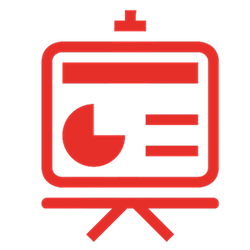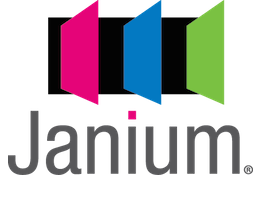Kogtec Modules
Public access catalogue (OPAC)
Kogtec’s public access catalogue module is a highly versatile tool, it allows users to preform searches with different complexity levels and recover information from both physical and digital collections, collections that may belong to the institution or external resources.
It also allows organizations to manage user services, such as: alerts, addicting personal data, manage user reservations, requests and even an online chat for users to communicate instantly, in real time, with the library. This module has a tags function to describe and contextualize information, allowing a user or group of users to sort, classify and share information (records, content, resources, etc.) by means of one or more keywords.
Module Options
- Literature search:
- Fast: by word, author, title, subject, publisher, series, classification, ISBS, ISSN and complete text.
- Advanced: by word, author, title, subject, publishing, list selection and full text.
- Numerical search: by barcode, acquisition number, number of tab and item, control number, classification, ISBS and ISSN.
- Search limiters: language, date of publication, etc.
- Searches on other sites : by Z39.50 and http.
- Alphabetical search: title, author, subject, series, etc.
- Other searches: Web search and XML services.

User services
- Reserve materials that are presently being lent
- Send requests to the library
- Change passwords
- Renew materials on the internet
- Review account statuses
Access to other catalogues
Searches on other sites: for Z39.50 and http
Alert services
- Bulletin of new acquisitions
- Special Collections.
- Selection Lists.
- Tags.
Social Network links
Twitter, Facebook, etc.
Electronic reference librarian
Define searches and represent them with images or icons, so that when you click on a particular icon it automatically runs the search. Organizations can create a hierarchical structure to guide the user so that it is easier to perform searches, ranging from general to specific, about certain topics, authors, bibliographies of courses, etc. The system comes with a basic configuration where information is organized by themes but each institution can design the electronic reference librarian in accordance with their specific needs. It is also possible to incorporate within the access structure to external resources, such as databases of content providers or web sites of interest to users. It allows:
- Predefined searches of the catalogue
- Access to sites of interest
- Access to electronic resources from other sites
- Access to resources marked with Tags
These options are configured in a hierarchical structure so that their distribution and access are easy and intuitive. The design of the electronic reference librarian is drafted by the institution itself according to its interests and needs.
Bibliographic control
- It simultaneously supports multiple formats for the creation of searches including: MARC21 Bibliographic, Dublin Core and personalized formats.
- It facilitates catalogue copying online via Z39.50.
- It allows the importation of records and files through MARC21, ISO 2709, XML, ASCII.
- It prints spine strips, pocket labels and bar codes as a group or for a specific book.
- Detection of duplicates comparing the fields of bibliographical records defined by the library for each type of document.
- It has a multi-language spell checker.
- It relies on specific capture formats for each type of material.
- The editor provides contextual help and prevents making improper use of the MARC format to control the repeatability of tags and subfields in each tag.
- It includes all MARC tags for RDA coding
- It is possible to display the RDA information in the OPAC
- The system comes by default with a configuration of 14 different types of bibliographic materials in MARC format.

Authority Control

- Management of MARC21 or NO-MARC records.
- Bibliographical Validation automatically verifies coincidences between bibliographical and authority records.
- immediate validation once material is classified
- Manage “see” and “see also” relations, as well as the necessary fields to establish hierarchies.
- Automatically generates files of authority from the records.
- Makes global changes to the bibliographic database from changes made by authorities.
- Includes all MARC tags for RDA coding.
Circulation
The circulation module allows different and independent circulation policies to be defined for each library. Regardless of the complexity of the circulation policies, the Kogtec system is designed to be adaptable to any institution’s way of working of. Through this module the following can be preformed:
- Loans, returns, and renewals of materials.
- Printing of loan and return tickets.
- User registration.
- Management of sanctions and fines.
- Sending notifications via email or mail
- Generation of no debt reports.
Loan History
Kogtec can be configured so that from the public catalogue users can view their loan history. This history shows you:
- Classification, bar code, title, author.
- Account Number, user profile and library, date and time of loan, maturity and return.
- Date and time of loan, returns, and renewal of materials.
- Account Number of the operators who registered the loan and who recorded the return.

Loan requests
Through the public catalogue users are able to send loan request to search for available material. This function allows the user to send a loan request of a given item to the circulation desk.When the user submits a request, the material is reserved for this user for a certain time (the reservation time may be configured to last minutes or hours) in order to allow the user to get to the circulation desk to check it out. Kogtec allows the library to generate reports with information about the time that takes a patron from the moment he or she makes the request until the item is checked out . This functionality is particularly interesting for those institutions where patrons do not have access to the collections and must fill an application form at the circulation desk to request the item .
Inventory
Through a very simple procedure for the operator, from the Modules of Management, Bibliographic Control and Circulation, it is possible to perform a physical inventory of the existing collections in each of the libraries without suspending circulation service.
- Allows the use of portable terminals
- Generates all reports automatically and easily.
Reports and statistics

- Generates lists and statistics of: records, catalogues, authorities, users, use of the material, etc. based on specific filters according to the particular needs of an institution.
- Exportation of results in csv files (to import in MS Office Excel).
- Designed to be utilized by the end user without the intervention of technical support.
Administration
- Vía the internet, it doesn’t require a telnet session or SSH with the server.
- Real time application of polices
- Custom configuration of all modules

